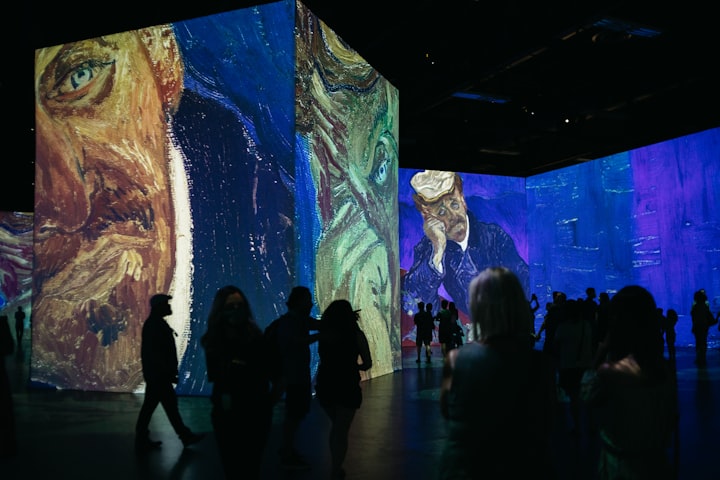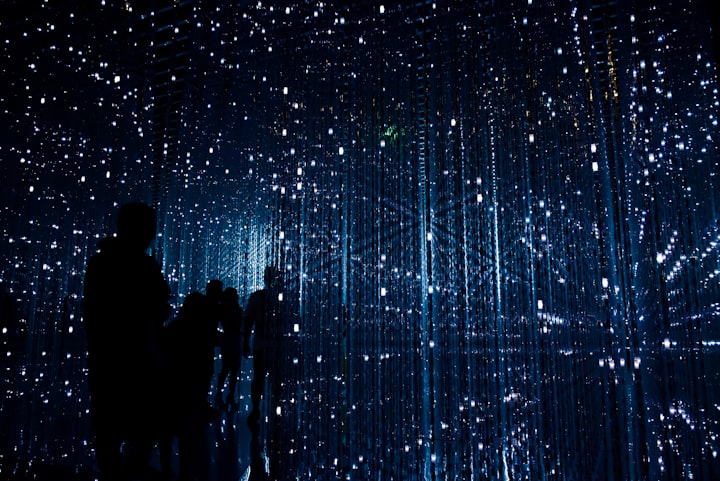"Brushstrokes of Turbulence: Van Gogh's Artistic Ode to Fluid Dynamics"
"Exploring the Harmony of Chaos in Art and Nature Through the Strokes of a Tormented Genius"
The human brain's astonishing capacity to discern and describe patterns is a marvel that transcends time and space. Amid the multitude of enigmatic patterns, turbulent flow in fluid dynamics has stood as an intellectual challenge of epic proportions. In the words of the renowned German physicist, Werner Heisenberg, "When I meet God, I'm going to ask him two questions: why relativity and why turbulence? I really believe he will have an answer for the first."
The enigma of turbulence has posed a formidable mathematical puzzle, one that finds its visual representation through the realm of art. Consider the iconic "The Starry Night," a masterpiece painted by Vincent van Gogh in June 1889, as he gazed upon the pre-dawn vista from his window at the Saint-Paul-de-Mausole asylum in Saint-Rémy-de-Provence. The artist's circular brushstrokes crafted a night sky that teemed with swirling clouds and shimmering stars, evoking a breathtaking sense of motion and luminance.
Van Gogh, along with his fellow Impressionists, presented light in a novel manner, capturing its dynamic essence, whether it danced upon sun-kissed waters or twinkled through the depths of a blue nocturnal canvas. This captivating effect emerges from luminance, which measures the intensity of light in the colors on the canvas. The more primal segment of our visual cortex, which excels at discerning light contrast and motion rather than color, ingeniously fuses two differently colored areas if they share the same luminance. In contrast, our primate subdivision recognizes the contrasting colors without amalgamation. This dual interpretation creates a vivid, pulsating effect in many Impressionist works, where light appears to flicker and radiate in a captivating manner.
Fast forward six decades, and a Russian mathematician named Andrey Kolmogorov took a monumental stride in the realm of fluid dynamics. His proposal that the energy in a turbulent fluid varies proportionally to the 5/3rds power of its length (R) was a leap forward, offering remarkable insights into the elusive nature of turbulent flow. However, turbulence, as a whole, remains one of the enduring mysteries in the realm of physics.
Turbulent flow exhibits self-similarity, characterized by an energy cascade where larger eddies transmit their energy to smaller ones, a process that echoes across various scales. This phenomenon finds expression in the grandeur of Jupiter's Great Red Spot, the intricate formations of clouds, and the enigmatic interstellar dance of dust particles. In 2004, the Hubble Space Telescope unveiled mesmerizing eddies within a distant cloud of dust and gas encircling a star, evoking the spirit of Van Gogh's "Starry Night."
This celestial connection inspired scientists hailing from Mexico, Spain, and England to delve deep into the labyrinth of Van Gogh's artistry. They embarked on a quest to dissect the luminance concealed within his paintings, unearthing a distinct pattern of turbulent fluid structures that remarkably adhered to Kolmogorov's equation. Digitizing the masterpieces, the researchers meticulously gauged the brightness fluctuations between pairs of pixels. Their conclusion was nothing short of astonishing: Van Gogh's paintings from his tumultuous, mentally agitated period bore an uncanny resemblance to fluid turbulence. However, his self-portrait with a pipe, crafted during a more serene phase of his life, exhibited no such correlation. Similarly, other artists' works, although initially appearing turbulent, failed to unveil this intriguing correspondence – a conundrum that defies easy explanation.
The profound beauty of this revelation lies in the fact that, amidst intense personal suffering, Vincent van Gogh managed to perceive and capture one of nature's most complex concepts. His artistry seamlessly intertwined with the intricate interplay of movement, fluid, and light, bridging the chasm between his unique perspective and the profound mysteries of the cosmos.







Comments
There are no comments for this story
Be the first to respond and start the conversation.